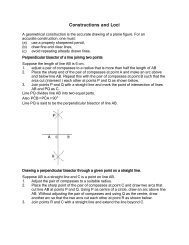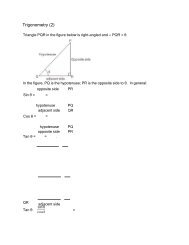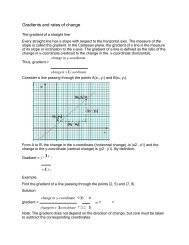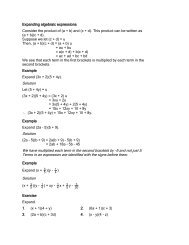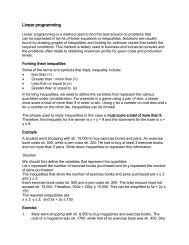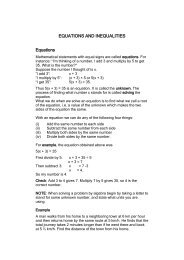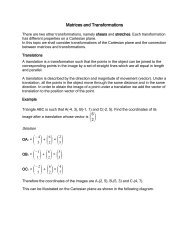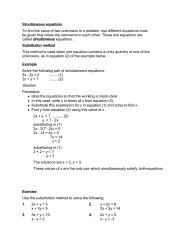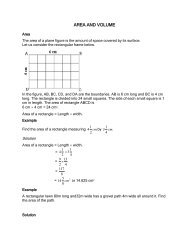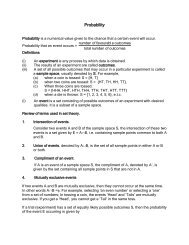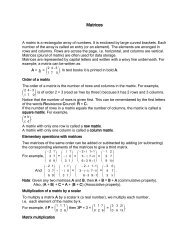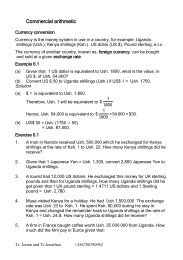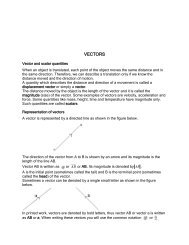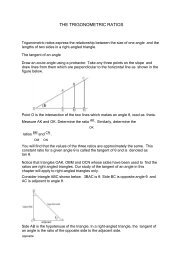J17
You also want an ePaper? Increase the reach of your titles
YUMPU automatically turns print PDFs into web optimized ePapers that Google loves.
(e) 94 × 106 (f) 975 × 1,025<br />
(g) 3 × 25 2 – 3 × 75 2 (h) 5 × 12 2 – 5 × 88 2<br />
(i) 6 × 53 2 – 6 × 47 2 (j)<br />
22 2<br />
56 22 56<br />
3. Factorize completely<br />
(a) x 2 y 2 – 16 (b) 1 – p 2 q 2<br />
(c) 9x 2 – y 2 (d) a 2 b 2 – c 2<br />
(e) 3x 2 – 27 (f) 2a 2 – 8<br />
(g) 5a 2 b 2 – 45c 2 (h) 8a 2 – 32b 2 c 2<br />
(i) 100 – x 2 (j) 16x 2 – 25<br />
(k) 81 – x 2 y 2 (l) x 2 y 2 – p 2 q 2<br />
(m) 3x 2 – 48y 2 z 2 (n) 5b 2 c 2 – 20d 2 g 2<br />
Solving quadratic equations<br />
7<br />
We solve an equation by finding the value of the unknown. For any two numbers, p and<br />
q, if pq = 0, then, either:<br />
(a) p = 0 which means 0 × q = 0<br />
(b) q = 0 which means p × 0 = 0<br />
(c) p = q = 0 which means 0 × 0 = 0<br />
Similarly, if (x + 2)(x+ 3) = 0, then either x + 2 = 0 or x + 3 = 0.<br />
Solving for x, gives either x = -2 or x = -3.<br />
Thus, in order to solve a quadratic equation, the quadratic expression is factorized so<br />
that the equation is in the form (x + a)(x + b) = 0.<br />
Example<br />
Solve (x – 4)(x + 1) = 0<br />
7<br />
2<br />
Solution<br />
If (x – 4)(x + 1) = 0, then either x – 4 = 0 or x + 1 = 0.<br />
Therefore, x = 4 or x = -1.<br />
Hence the roots of the equation (x – 4)(x + 1) = 0 are 4 and -1.<br />
Example<br />
Factorize x 2 + 7x + 6 = 0<br />
Solution<br />
x 2 + 7x + 6 = 0<br />
Factorizing, x 2 +7x + 6, gives (x + 6)(x + 1) = 0.<br />
Therefore, x + 6 = 0 or x + 1 = 0; which means x = -6 or x = -1<br />
These are the only two values of x which satisfy the equation x 2 + 7x + 6 = 0. We can<br />
check these solutions by substituting each of them in the equation.



